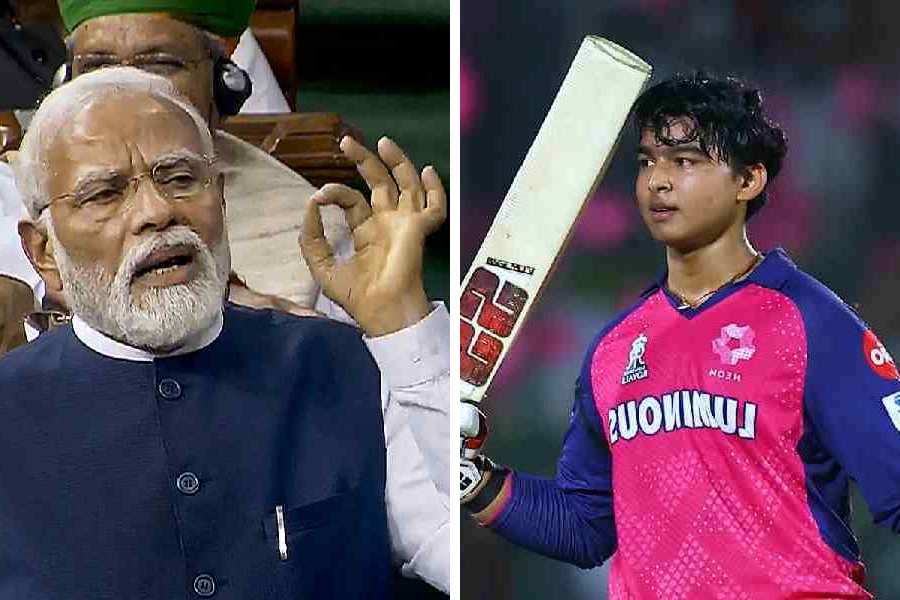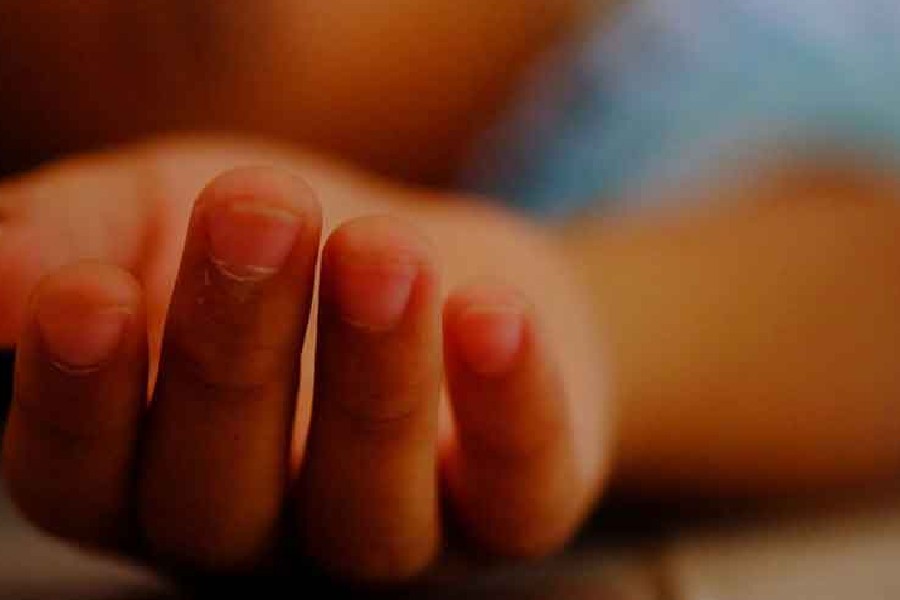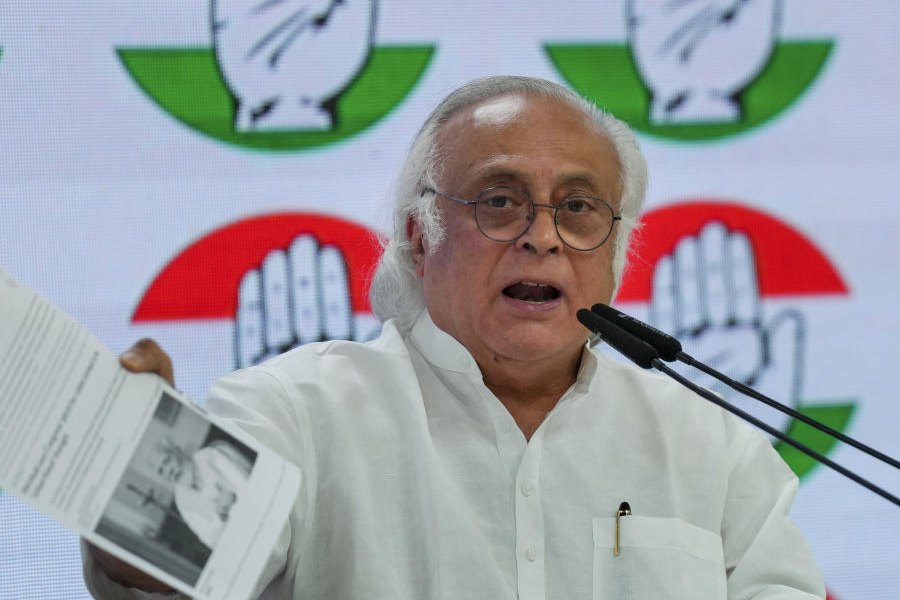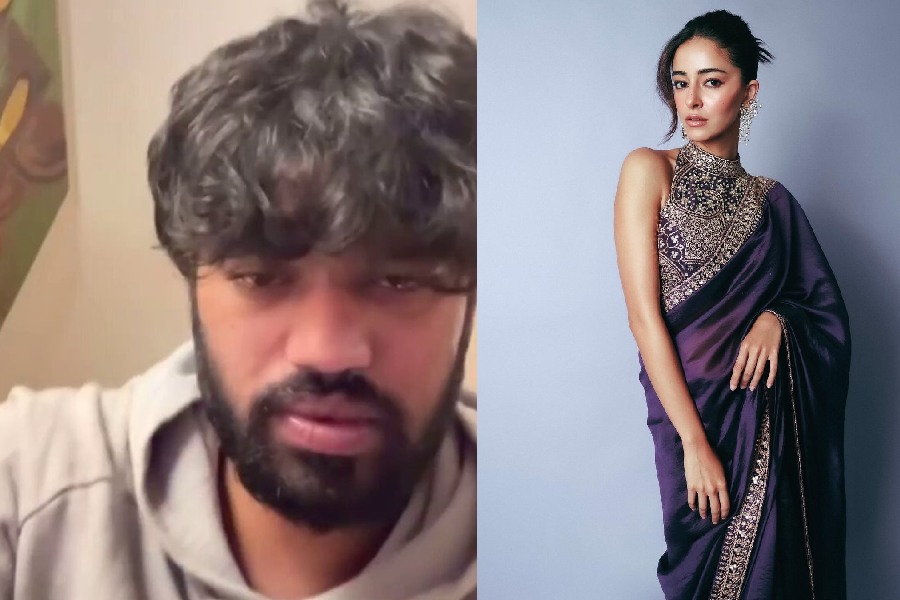 |
Chhath, performed on Karthik shukla sashthi or the sixth day of the Hindu month of Karthik, represents the highest form of devotion to the Sun God — the source of all life on Earth, the exorcist of all diseases.
The austerity, simplicity and rigour with which Chhath puja is performed are awe-inspiring. Standing knee-deep in the Ganga or some other water body, holding aloft the soops (bamboo trays) laden with offerings, the devotee or vrati offers arghya (prayer) to the setting Sun and waits for it to rise the next day to offer the final oblation.
It is said that in the Mahabharata, Draupadi performed the ritual on the advice of the sage, Dhaumya. Sun worship may have been practised in Bihar from very early times.
Some sources relate the festival to the warrior Karna, who was also the son of Surya, the Sun God.
The Sun has been worshipped in the hymns of the Rig Veda and its attributes have been richly described. In the ancient book, Vishnu is part of the solar pantheon as he takes on the three forms that establish him as the god of the three worlds.
But the importance of the Sun God waned over time as the Bhakti cults of the age of the Puranas became popular. The patronage of the Gupta, Pala and Sena rulers revived the popularity of Sun worship in north and east India. From the seventh century AD, Sun worship has been popular in east India. Images of the Sun God were placed in temples. Aditya Bhaktas (Sun worshippers) would attempt from time to time to make their lord superior to Vishnu and Shiva.
The Shahapur stone image inscription of king Aditya Sena records, among other things, the installation of the image by Baladhikrita in the agrahara (land donated to Brahmins) in Nalanda. The Deo temple of Aurangabad is a centre of Sun worship. It dates back to the seventh century AD when Jivitagupta II, a later king of the Gupta dynasty, recorded the grant of a village for the worship of the Sun God. Deo Baranark, known in ancient times as Varunika, is located about 40 kilometres southwest of Ara.
Further information on the growing importance of Sun worship can be found in the Govindpur stone inscription in Gaya district. It refers to a family of Maga Brahmins from Saka-dvipa in Govindpur. The Magas were supposed to be the descendants of the Sun God. The composer of the inscription is one Gangadhar belonging to the line of the Maga Brahmins. The inscriptions suggest that by the 12th century AD, Bihar was one of the strongholds of the Magas’ devoted.
Epigraphs record that the Magas were cured of some disease (possibly leprosy) by worshipping the Sun in Iran. References to the Magas can also be found in inscriptions from other parts of northern India. Of the numerous Puranas, the Samba Purana deals with the cult of the Sun God. It dates to some time between AD 600 and AD 800.
The Sun God has been described as the healer of all diseases. The Magas laid special emphasis on the Sun’s capacity to destroy sins and cure diseases like leprosy. The Healer was described as samasta rogam harta. Poets have glorified the Sun God as the symbol of rejuvenation, prosperity and long life. In the course of Chhath, family members of those suffering from diseases take to prostrating on the ground on way to the ghats to perform their rituals.
Men also perform the Chhath puja rituals, but the festival is associated mostly with women. It is significant that there are no officiating priests to perform the rituals. Rather, the devotee concerned abstains from daily household chores and offers prayers to the Sun God.
Deprived of taking part in worship or sacrifice, women probably took to performing vratas — a vow to observe physical and mental discipline to attain a desired object. The vratas may have been a form of folk worship, later incorporated into brahminical rituals. These hardly require the knowledge of mantras and can be performed by the devotees’ singing of folklores. Chhath worship is open to people of all castes and acts as a great social leveller.
The goddess or Chaathi Maiya worshipped during the puja could signify Usha or the goddess of dawn. Before the four-day festival begins, the house of the worshipper is cleaned meticulously. Usually, youths take up the responsibility of cleaning the roads and ghats.
There is an element of fear because devotees believe that even the slightest deviation from the norms of worship could invite divine wrath. The festival begins with a dip in the sacred Ganga for purification, followed by a simple meal of rice and green gourd. On the second day, the devotees fast, breaking it in the evening with Kharna prasad — usually kheer and puri. The vrati then resumes her fast, breaking it the next day after the morning arghya (worship). On the third day, the offerings are prepared and arranged in soops. This includes the thekua made of wheat flour and jaggery. The offerings are made to the setting Sun. Later at night, in some households, kosi is performed. It is a ritual in which agni (fire) is worshipped under a canopy of sugarcanes. On the fourth day, offerings are made to the rising Sun.The whole family has to participate so that the puja can be performed according to the norms.
As the weather cools, Biharis all over the world wait to listen to the Chhath songs heralding the advent of the festival.
Stalls are being set up on the roadside; the special earthen chullahs (ovens) have appeared; sugarcanes, coconuts and other paraphernalia of Chhath worship are also aplenty.
May the Sun God, the source of all energy, bring peace and prosperity to all.









